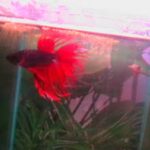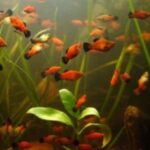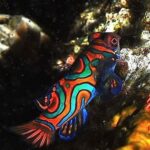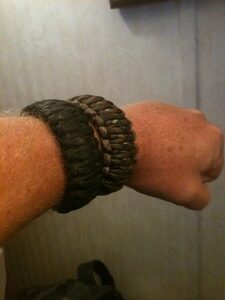Fresh water aquariums are stocked with many different fishes, but few grab your attention like the Electric Yellow Cichlid. This brightly colored cichlid would liven up any fresh water tank community. But before purchasing it, consider its feeding requirements, compatibility with other fish, and tank requirements.
Classification, Distribution, and Description
The Electric Yellow Cichlid is scientifically called Labidochromis caeruleus, and it is part of the Cichlidae animal family . This freshwater fish is commonly called Lemon Drop or Yellow Lab due to its bright yellow color. Males have a dark colored anal and ventral fins, and they are larger than the females. On average, this species grows up to eight inches in length. This fish is native to Lake Malawi, which is located in the southeastern part of Africa.
Diet and Behavior
This fish eats plants and meat. In the wild, it feeds on algae, insects, mollusks, and snails. It uses its long teeth to grab onto prey that are lodged in small crevices. In captivity, it is recommended to provide a varied diet. Both live food and flakes provide a nutritious blend for the fish. Consider feeding it vegetable based flakes and brine shrimp. Occasionally, add blood worms to the diet.
This cichlid isn’t aggressive. Most of the time, this fish will calmly swim from one side of the tank to the other. It doesn’t attack other fish, so it is safe to introduce into differing fish communities. The fish doesn’t burrow into the gravel or pick at decorative plants.
Tank Requirements
The ideal tank size for this species is about 65 gallons, and the water temperature should be between 75 and 79°F. This fish requires alkaline water with a pH between 7.2 and 8.8, and it requires hard water measuring between 10 and 20°dGH.
The environment within the tank should have several places to hide. Hollowed out rocks are ideal places for the fish to rest and to spawn. A piece of wood is another item that is beneficial. It will collect algae, which becomes a food source. Avoid placing too many standing plants that block swimming paths across the tank.
Breeding
The Electric Yellow Cichlid is described as a ovophile mouth brooder, which is a type of reproduction where the female deposits the eggs into a pit and then scoops them up into her mouth after fertilization. The eggs hatch inside the mouth, and the young are held there for several weeks. As many as 30 fishes can fit inside the mouth of the female. This species is capable of reproduction at six months of age. The fish is about two inches in length at this point.
If you are considering adding an Electric Yellow Cichlid to your fresh water aquarium, take into account these requirements. It requires a large tank containing alkaline, hard water with a temperature in the upper 70s. A daily supply of food flakes and brine shrimp is essential for its health. Finally, consider the contrast between the bright yellow and the rest of the colors of the tank.
Reference:
“Electric Yellow Cichlid.” Animal-World.
“Electric Yellows.” Sydney Cichlid Aquarium Pages.
Breeding Techniques for Tropical Fish.” Mongabay.





